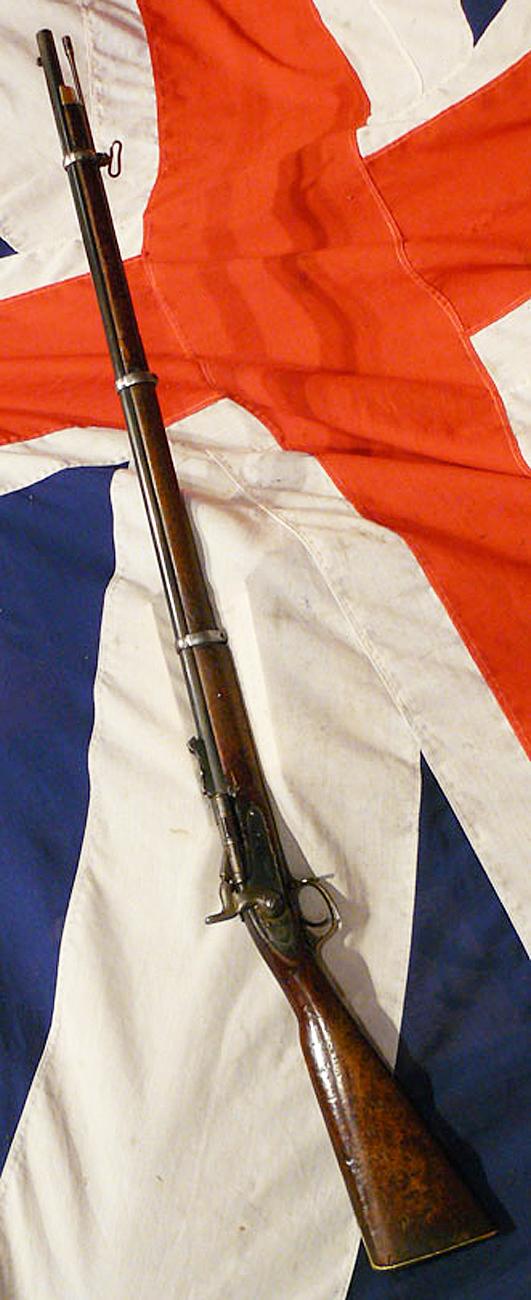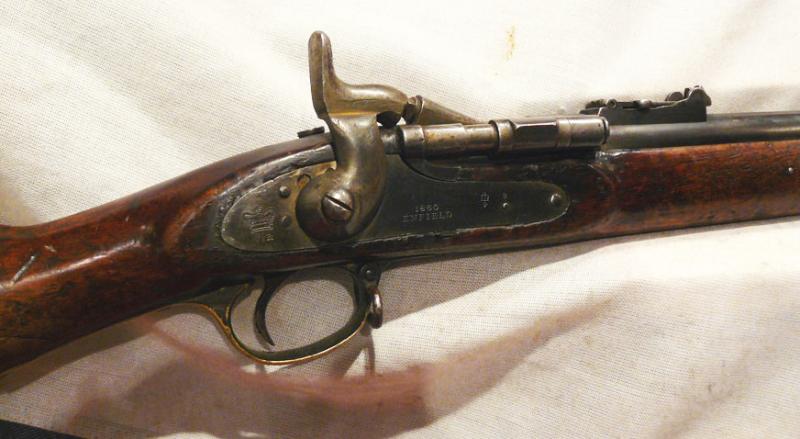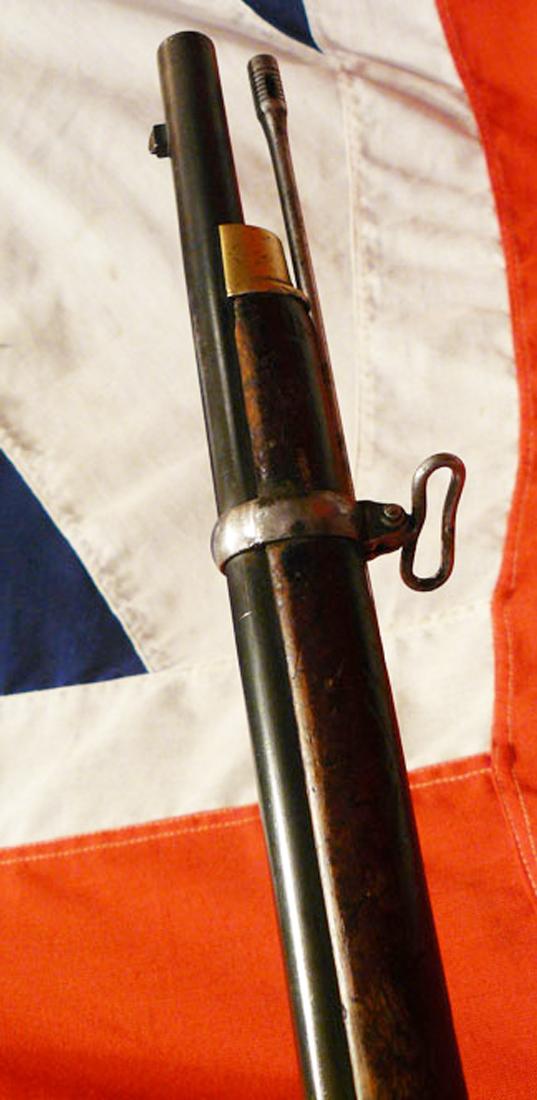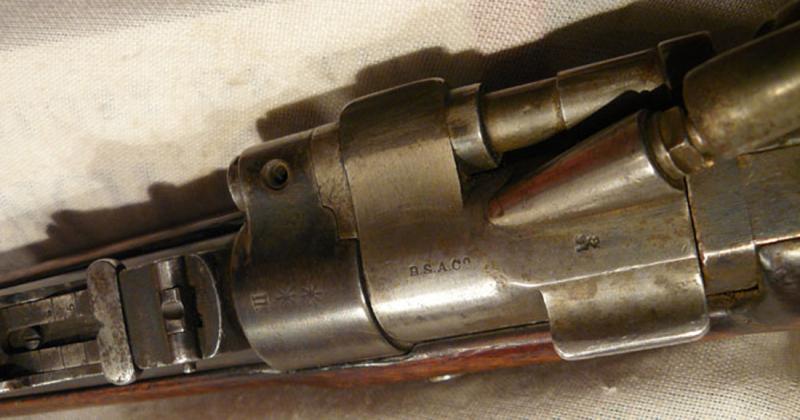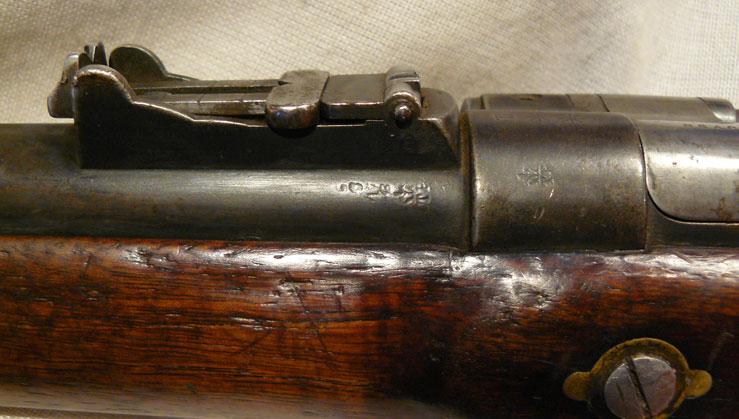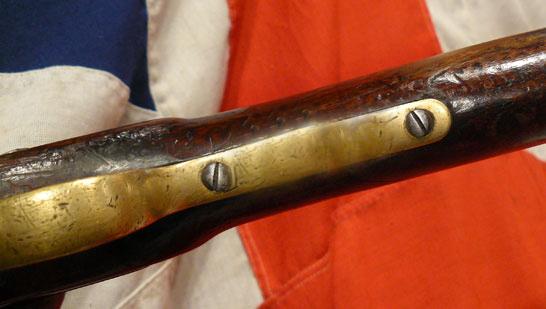An Enfield 3 Band Rifle,1853 Pattern, Made in 1860 With Snider Centre-Fire Boxer Cartridge Conversion with Original 1853 Bayonet
Royal Small Arms Factory developed the Pattern 1853 Enfield in the 1850s. The 39 in (99 cm) barrel had three grooves, with a 1:78 rifling twist, and was fastened to the stock with three metal bands, so that the rifle was often called a "three band" model. The rifle's cartridges contained 2+1⁄2 drams, or 68 grains (4.4 g) of gunpowder, and the ball was typically a 530-grain (34 g) Boxer modification of the Pritchett & Metford or a Burton-Minié, which would be driven out at approximately 1,250 feet (380 m) per second.
The British .577 Snider–Enfield was a breech-loading rifle. The American inventor, Jacob Snider created this firearm action, and the Snider–Enfield was one of the most widely used of the Snider varieties. The British Army adopted it in 1866 as a conversion system for its ubiquitous Pattern 1853 Enfield muzzle-loading rifles, and used it until 1874 when the Martini–Henry rifle began to supersede it. The British Indian Army used the Snider–Enfield until the end of the nineteenth century.
In trials, the Snider Pattern 1853 conversions proved both more accurate than the original Pattern 1853s and much faster firing; a trained soldier could fire ten aimed rounds per minute with the breech-loader, compared with only three rounds per minute with the muzzle-loading weapon. From 1866 onwards, the Enfield rifles were converted in large numbers at the Royal Small Arms Factory (RSAF) Enfield beginning with the initial pattern, the Mark I. The converted rifles received a new breechblock/receiver assembly, but retained the original iron barrel, furniture, lock, and hammer.
The Mark III rifles were newly made. They featured steel barrels which were so marked, flat nosed hammers, and a latch-locking breech block instead of the simple integral block lifting tang.
The Snider–Enfield used a new type of metal-cased cartridge called a Boxer cartridge after its designer. The breech block housed a diagonally downward sloping firing pin struck with a front-action lock mounted hammer. To operate the weapon, the rifleman cocked the hammer, flipped the block out of the receiver to the right by grasping the left mounted breech block lever, and then pulled the block back to extract the spent case. There was no ejector, so the firer turned the rifle to the right and upside-down to allow the case to drop out.
Frank Richards, who served on the Northwest Frontier between 1902 and 1908, records in Old Soldier Sahib that the British army still used Sniders during that period. Sentries on night duty in camps and cantonments would carry a Snider and buckshot cartridges. Should tribesmen try to get into the camp to steal rifles, the buckshot would give the sentries a better chance of hitting the thief, and unlike a .303 round, would be less likely to wound or kill a comrade should the sentry miss.
The Snider was notably powerful. Rudyard Kipling gave a graphic depiction of its effect in his poem, "The Grave of the Hundred Head":
A Snider squibbed in the jungle—
Somebody laughed and fled,
And the men of the First Shikaris
Picked up their Subaltern dead,
With a big blue mark in his forehead
And the back blown out of his head.
Code: 24965

